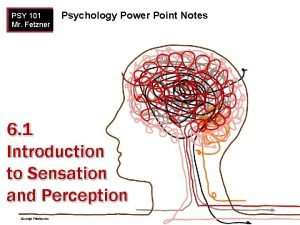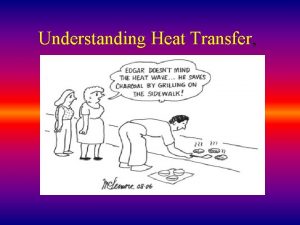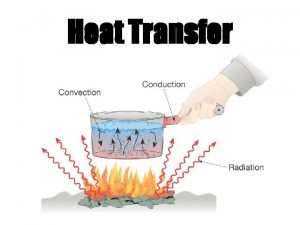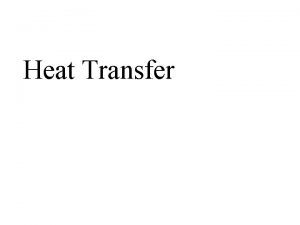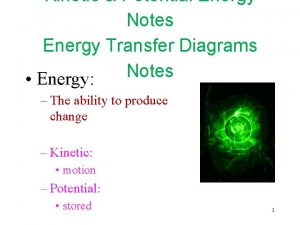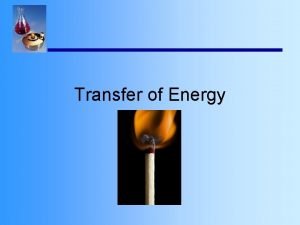Transfer of Energy Short Notes Energy moves from







- Slides: 7

Transfer of Energy Short Notes Energy moves from one place or system to another place or system

Energy Transfer When energy moves from one place (your drink) to another place (an ice cube) or from one system (your body) to another system (the atmosphere) it has transferred. When energy is transferred from one system (or place)to another, the quantity of energy before transfer equals the quantity of energy after transfer.

Open and closed systems Energy can only transfer between open systems. Energy cannot transfer into or out of a closed system. A closed system is one that does not interact with its surroundings. Most systems on Earth are open systems and interact with their surroundings. Many times this is done by transferring thermal (heat) energy into the atmosphere.

Examples An example of a closed system would be a jar with a lid on it. If we have water in the jar and heat the jar, the water may evaporate into water vapor, but it would stay in the jar. An open system would be a jar without a lid on it. If we have water in that jar and we heat it, the water (matter)can evaporate into the surrounding environment as water vapor, and thermal energy can transfer into the atmosphere as well.

Total amount of energy The total amount of energy always remains the same. That's what is meant by "energy can be transferred or transformed but is never lost". (This is called the Law of Conservation of Energy) The total amount of energy input will equal the total amount of output. If energy appears to be gained or lost, it has just transformed or transferred into a different system.

What can help or hinder the transfer of energy? Conductors - materials that make it "easy" for energy (heat or electrical) to move from one place to another. Examples include most metals (such as copper and gold). Insulators - materials that make it difficult for energy (heat or electrical) to move from one place to another. Examples include wood, glass, air, most fabrics, paper.

Our first activities. . In our first activity, you to maximized heat energy transfer. In our next activity, I want you to create a toy that will minimize heat energy transfer. Are you Energy and Excitement Engineers (some people call us EEElves) up for the challenge?







